Protection Measures

-
- Who We Are
- Mandate, Mission and Governing Legislation
- Access to Information and Privacy (ATIP) Requests
- Info Source
- Corporate Reports
- Annual Public Meetings
- Current Year (Transparency)
- Archives (Transparency)
- Governance
- Diversity, Equity, Inclusion and Accessibility
- Environmental, Social and Governance
- Contact Us
- Become an email subscriber
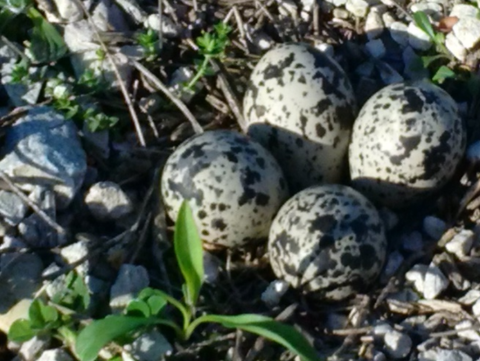
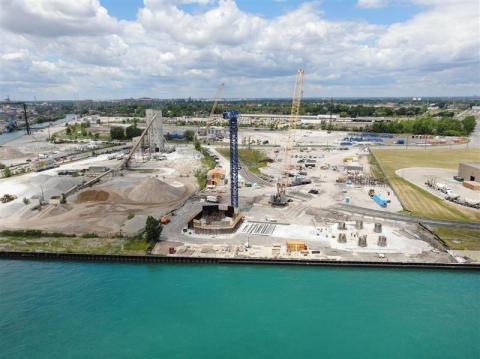
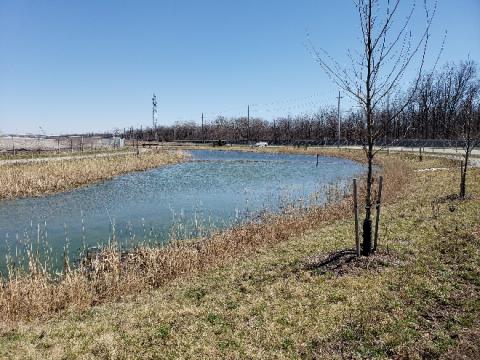
Windsor-Detroit Bridge Authority (WDBA), Michigan Department of Transportation (MDOT), and Bridging North America (BNA) are committed to protecting the environment both on and adjacent to the Gordie Howe International Bridge site. A diverse approach is being implemented to limit any potential adverse effects on the natural environment, cultural resources, and neighbouring residents and businesses. Through daily inspections, several integrated environmental components are regularly assessed to determine the effectiveness of current actions and guide future improvements. On the Canadian and US project sites, a number of environmental impact categories have been identified for monitoring and mitigation throughout the life of the Project, in accordance with commitments in the approved Environmental Assessment Report and Federal Screening Report in Canada and the Final Environmental Impact Statement (FEIS) and Record of Decision (ROD) in the US.
Updates on the various environmental components and mitigation measures used on the project can be found below.
Read the latest quarterly Canadian environmental update below. This information covers activities from January – March 2024.
- Project recycling rate across all four project components is (63%)
- Energy efficiency programs at project site trailers are ongoing from previous quarters.
- Indoor air quality monitoring and inspections of POE buildings completed.
- Regular outdoor air quality monitoring continued through this reporting period utilizing two permanent ambient air quality monitoring stations.
- The falconry monitoring program resumed in March 2024.
- Regular inspections of sediment controls were undertaken to ensure appropriate mitigations are in place to prevent dust. Ongoing dust mitigation included maintenance of mud mats and rumble strips at all entrance points, site watering (when feasible) and road sweeping. Ongoing sampling of excess soils is also being completed to identify off-site beneficial reuse locations.
- Landscaping work is ongoing at the POE.
- Ongoing sampling of excess soils is also being completed to identify off-site beneficial reuse locations.
- The Vibration Monitoring Program was initiated for the reconstruction of Sandwich Street. Outreach to properties located within the Zone of Influence was undertaken.
Archives:
- Activities from October 1 to December 31, 2023
- Activities from July 1 to September 30, 2023
- Activities from April 1 to June 30, 2023
- Activities from January 1 to March 31, 2023
- Activities from October 1 to December 31, 2022
- Activities from July 1 to September 30, 2022
- Activities from April 1 to June 30, 2022
- Activities from January 1 to March 31, 2022
- Activities from October 1 - December 31, 2021
- Activities from July - September 2021
- Activities from April - June 2021
A variety of species are native to the area around Canadian project site, including a number of Species at Risk (SAR). Prior to construction, extensive SAR screening was undertaken, and any SAR identified on-site were relocated to a safe environment. Since the start of construction. exclusion techniques have been used to discourage wildlife from re-entering the site. This includes the installation of wildlife exclusion fencing along the perimeter to minimize the likelihood of wildlife from adjacent natural areas entering construction zones. This exclusion fencing has been, and will continue to be evaluated and maintained throughout construction.
All site staff undergo mandatory SAR training to ensure proper response steps are undertaken in the event that wildlife is discovered on-site. For example, should wildlife be identified on-site, work that would potentially harm the individual(s) is halted, environmental staff are notified, and an appropriate exclusion zone is established to prevent disturbance. A qualified biologist will then be contacted for further direction.
To prevent possible harm to unidentified wildlife on-site, a number of measures are in place including the introduction of site vehicle speed limits and regular visual inspections of equipment and work areas prior to activities. Additionally, inspections by a Wildlife Specialist are required before removing brush or debris, digging, and prior to new work activities during the bird nesting period.
Vegetation in natural areas adjacent the project site, including Black Oak Heritage Park, is protected by exclusionary fencing and/or setbacks. On-site, tree removal is avoided except where needed to allow for the safe construction and management of the project. Where trees of significant sizing require removal, they are tracked and will be replaced as part of the site landscape plan.
Vegetation protection and invasive species identification are part of regular sitewide inspections to evaluate the continued effectiveness of site environmental mitigation efforts. Additionally, important environmental areas, including the Broadway Drain, are subject to further enhanced monitoring.
To reduce introduction and support the management of invasive plant species on the site, staff are trained on Best Management Practices (BMPs) to avoid transporting invasive species. Staff clothing, equipment and vehicles are regularly checked for seed or plant matter, and cleaned as necessary, before entering and moving around the site. Seed mixes, soil, and other materials coming into the site must also be free of invasive species seeds and plant matter. Where invasive plant species are identified on-site, immediate, seasonally appropriate measures to manage or eradicate the species are taken to prevent further establishment or spread.
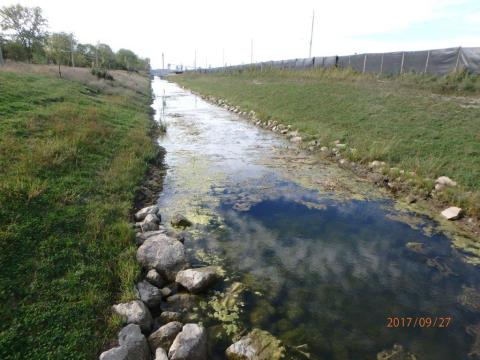
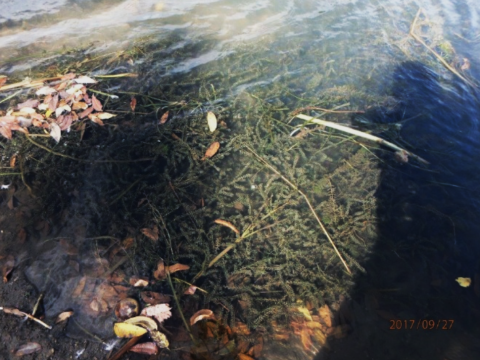
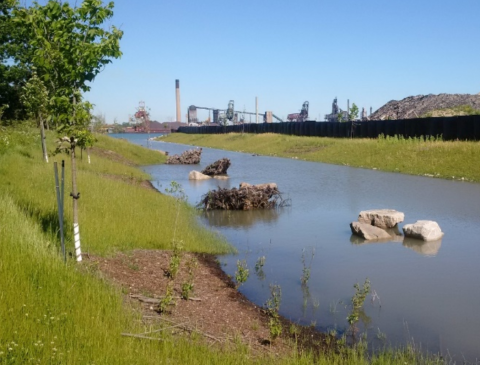
Important surface water features are present on and adjacent to the project site including the Detroit River, Broadway Drain, and Healy Drain. These features are regularly monitored, but specifically during dewatering, in-water work, and following significant precipitation events. In-water work is limited to minimize the duration of disturbance to aquatic resources and habitats. In-water work will also be avoided during weather that may increase erosion and must be completed outside of the warmwater timing window, during the fish spawning period, as mandated by the Department of Fisheries and Oceans (DFO).
Erosion measures are in place around areas where earthworks are being completed or stockpiles have been generated to reduce potential sediment in runoff leaving the site. Where water is pumped, it is managed to reduce sediment and/or treat other substances prior to discharge. Site requirements mandate that any equipment fueling be completed at least 30 metres from waterbodies. Additionally, any equipment used during in-water works will use biodegradable hydraulic oil to minimize the effects of any inadvertent spill entering surface water. During winter operations, the use of salt and other deicers will be limited to the extent possible, especially in close proximity to waterbodies.
In the early phases of the project, major works occurred on the rehabilitation of the Broadway Drain, as part of these works enhanced fish habitat was integrated into the Drain through the introduction of a variety of features including rock clusters, native plantings and placement of root wads. These efforts are anticipated to provide habitat for a variety of aquatic species, including SAR and sportfish.
Potential effects to groundwater were evaluated as part of detailed environmental studies conducted through the Detroit River International Crossing (DRIC) study and further refined as part of the detailed design of the project. Potential effects to groundwater are minimized by limiting water management activities and quantities to those needed for the safe construction of project infrastructure. Mitigation measures include using barriers such as sheet pile walls to minimize dewatering requirements during excavation and minimizing excavation footprints to the extent possible. Regular monitoring is ongoing to detect potential, but unlikely effects, on nearby water wells or ground settlement.
To limit sediment discharge to the environment, a number of temporary features are being used. These include the use of catch basins and stormwater management ponds, as well as active treatment of pumped water. Water is not discharged to the ground surface or natural environment unless it is shown to meet applicable laws and guidelines. Where water cannot be pumped to the environment, water that satisfies municipal by-laws may be released to the local sewer system if the necessary approvals are obtained. Managed water not meeting either criteria may be treated on-site and/or transported to a licensed off-site facility for treatment.
Erosion by wind or water can lead to the migration of sediments off-site, or into waterways, reducing water and air quality. To limit erosion, disturbed ground and excavated material piles are stabilized as soon as practical in accordance with project commitments and regulatory requirements. Stabilizing methods include planting vegetation, covering with geotextile and/or the use the use of binding agents.
To control sediments carried by water, a variety of mitigation measures are being implemented. Silt fencing is installed at key locations around the site, which allows water to pass through, while increasing detention time and reducing suspended materials. Water from the site, can also be directed to settlement areas such as stormwater management ponds and catch basins, where the sediment can settle out of the water before it is introduced back to the environment. Site grading is used to manage site runoff and direct water to appropriate areas through ditching, swales and other contouring.
Large stockpiles of excavated materials exist on-site, mainly with the intention to reuse this material. Stabilization of these piles is an important measure in preventing erosion through dust and waterborne sediment. Excavated materials are classified based on historical data and sampling, then classified for reuse or remediation.
Air quality on the project site is monitored in multiple locations for a variety of parameters including particulate matter and volatile organic compounds (VOCs). Staff also monitor for odours, particularly during excavation.
To reduce particulate matter, a number of dust control measures and practices are being used. Exposed materials and stockpiles are limited where possible and water or other dust suppressants, are used to control dust in construction areas or stockpile locations. Revegetation, through seeding, is also an important strategy in preventing dust and is carried out where possible.
All vehicles on-site must adhere to the speed limit, and trucks hauling materials are to use tarp covers to limit possible dust generation. Active road watering and sweeping also occurs where required to reduce traffic dust, and construction activities are altered during periods of sustained high wind conditions.
To reduce noise disturbance, noisy construction activities are limited to occur during daytime hours, where possible. All equipment is required to be fitted with functional mufflers and where feasible, lower noise equipment or methods will be implemented. To reduce vibration disturbances, setback distances from buildings and utilities have been and will continue to be implemented.
Hazardous materials will be classified and stored on-site in safe locations. Containers are to be stored, away from waterbodies, and locations with restricted public access. Spill kits and fire extinguishers adequate to the type and quantity of hazardous materials stored are also maintained near storage areas.
General garbage on-site will be managed through adequate storage and frequent removal. Littering is prohibited, and the site is managed to prevent unwanted dumping of waste. Waste storage areas are regularly evaluated, with waste removed as needed.
Concrete mixers and trucks working on the project have on-board washout and containment features or will use designated washout areas to minimize the likelihood of spills associated with concrete works. Washout locations may be relocated around the site to meet construction needs. These features may take on different forms/configurations but are regularly maintained to avoid spillage of these materials.
All land that will be impacted by the project, with the exception of Sandwich Street, was subject to previous archaeological assessments as part of the DRIC study and has been cleared of archaeological concerns in agreement with regulatory requirements. In total, over 1,000 properties were surveyed and over 100 archaeological sites were identified. Archaeological sites in areas where construction would impact the land were mitigated through controlled excavation and were fully removed. Learn more about the studies completed. (Link to DRIC study arch links).
Work on the archaeological assessment for the Sandwich Street Reconstruction Project being undertaken as part of the Gordie Howe International Bridge project began in late 2020 and is anticipated to be completed in 2021.
Ensuring that the residents, business owners and governments of the adjacent communities are engaged, informed and play a role in the planning and delivery of the Gordie Howe International Bridge are not only priorities for WDBA but also reflect commitments made during the DRIC study. Since 2015, WDBA has held numerous community meetings to seek feedback and discuss questions, concerns and topics of interest. The community will continue to have consultation opportunities with BNA during design, construction and operation phases of the project. Efforts are made to ensure project-related materials and events are accessible and accommodate all members within our diverse communities.
Read the latest quarterly US environmental update below. This information covers activities from January – March 2024.
- The Vibration Monitoring Program continued. The program launched in January 2021 with outreach to 120 properties located within 150 feet of specific construction zones (US specific). Monitoring for Historic Fort Wayne is ongoing during Jefferson Road reconstruction activities.
- Regular inspections of sediment controls were undertaken to ensure appropriate mitigations are in place to prevent dust. Ongoing dust mitigation included maintenance of mud mats and rumble strips at all entrance points, site watering (when feasible) and road sweeping.
- Sampling of excavated materials continued. Surplus materials previously re-used throughout the US Port of Entry (POE) site for surcharge fill placement were exported off-site.
- Soil sampling and testing for contamination continued throughout the US POE and the Michigan Interchange sites.
- Monitoring continued on noise and vibration, excavated materials and hazardous waste throughout the site. Required mitigations have been implemented.
- Air quality monitoring and mitigation measures such as spraying water continued throughout the site to minimize dust generation. Regulatory consultation continued to meet necessary requirements.
- Onsite stormwater continues to be managed through a series of temporary stormwater management ponds in accordance with regulatory requirements.
Archives:
- Activities from October 1 to December 31, 2023
- Activities from July 1 to September 30, 2023
- Activities from April 1 to June 30, 2023
- Activities from January 1 to March 31, 2023
- Activities from October 1 to December 31, 2022
- Activities from July 1 to September 30, 2022
- Activities from April 1 to June 30, 2022
- Activities from January 1 to March 31, 2022
- Activities from October 1 - December 31, 2021
- Activities from July - September 2021
- Activities from April - June 2021
With any major construction activity, the use of heavy machinery may cause noise and vibration above existing levels and beyond the project footprint. The Gordie Howe International Bridge project team understands the concern that those living and working adjacent to the construction areas have regarding noise and vibration and are making every effort to reduce impacts to residents, businesses and historical structures.
The predicted levels of vibration indicate that structural damage is not anticipated as a result of construction activities. However, the project team, in accordance with the FEIS and Record of Decision (ROD), is implementing a vibration monitoring program for the owners of properties located within 150 feet of specific construction zones.
Vibration monitoring determines the current condition of structures and shows if construction activities adversely impact them during construction activities. The program includes the completion of pre-construction, construction and post-construction foundation surveys as well as actual vibration monitoring during specific construction activities. The vibration monitoring program was launched in September 2019 with a phased approach. Phase Two of the program began in December 2020. Learn more about the vibration monitoring program.
Noise barriers will also be installed in locations identified through the Detroit River International Crossing study and Final Environmental Impact Statement re-evaluation completed in 2018 to mitigate noise levels at adjacent properties. Noise barriers will be located along the north side of I-75 between:
Green Street and Rademacher Street
Livernois and Junction Street
Junction Street and Clark Street.
Consultation meetings will be held in the future to present further information on the noise barrier design.
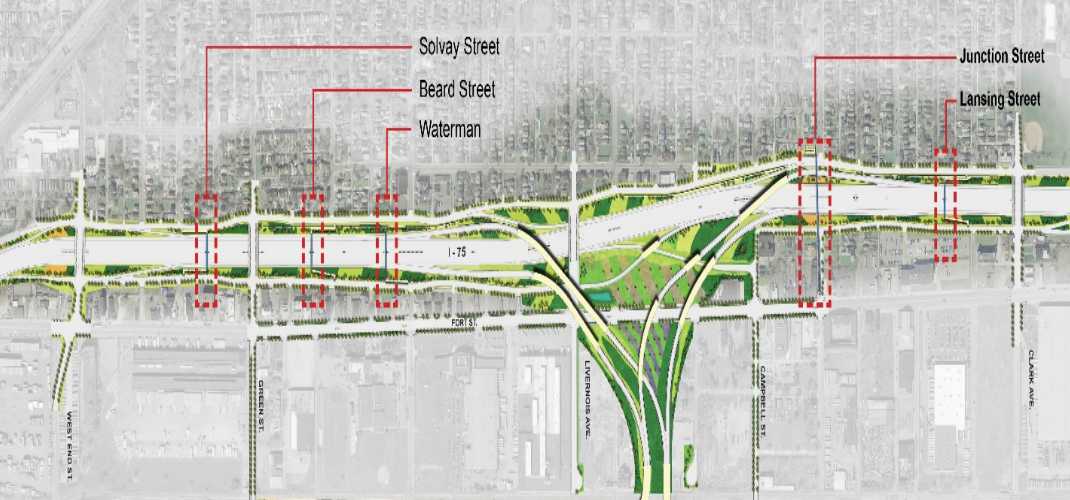
As part of the Gordie Howe International Bridge project, five pedestrian bridges crossing Interstate-75 will be built to provide safe access to services within the community. The new bridges also will enhance the aesthetic corridor experience for motorists as they travel through the Detroit region. Pedestrian bridges will be located over I-75 at Solvay Street, Beard Street, Waterman Street, Junction Street and Lansing Street.
All new structures will be upgraded to meet Americans with Disabilities Act (ADA) standards. Following extensive consultation with the community an arch design was selected for the final aesthetic design of the pedestrian bridges.
Erosion by wind or water can lead to the migration of sediments off-site, or into waterways, reducing water and air quality. To limit erosion, disturbed ground and excavated material piles are stabilized as soon as practical in accordance with Project commitments and regulatory requirements. Stabilization methods include vegetation plantings, placement of geotextile material and/or the use the use of binding agents.
To control sediment carried by water, a variety of mitigation measures are being implemented. Silt fencing is installed at key locations around the site, which allows water to continue to flow, while increasing detention time and reducing suspended materials. Water from the site is also directed to settlement areas such as stormwater management ponds and catch basins, where sediment can settle out of the water before it is introduced back to the environment. Site grading is used to manage site-runoff and direct water to appropriate areas through ditching, swales and other contouring. Any offsite discharge of water is undertaken in agreement with regulatory guidance and relevant approvals.
Efforts such as refueling at least 50 feet from waterbodies and the use of biodegradable hydraulic oil for in water work, contribute to the prevention of contaminants from entering surface water. Salt and material storage areas are also located in areas that minimize the likelihood of substances entering waterbodies, along with following good housekeeping procedures.
Potential impacts to groundwater are frequently reviewed and evaluated with a variety of mitigation measures to be implemented as needed. The primary measure to minimize any water impacts is accomplished by limiting dewatering quantities to those needed for the safe construction of project infrastructure. To limit dewatering activities, barriers such as sheet pile walls are installed to reduce seepage during excavation, while minimizing excavation footprints. Regular monitoring is ongoing to evaluate the effectiveness of the mitigation measures, using a variety of tools. Monitoring efforts will detect any potential, but unlikely, effects on nearby groundwater conditions and/or ground settlement.
To limit sediment discharge to the environment, several temporary features are used. These include the use of catch basins and stormwater management ponds, as well as active treatment of pumped water. Water is not discharged to the ground surface or natural environment unless it is shown to meet applicable laws and guidelines. Managed water that does not meet the required criteria is treated on-site to meet regulatory requirements or is transported to a licensed off-site facility for treatment.
As part of project construction, tracking and evaluation of the quality and quantity of materials excavated on or imported to the project site is being undertaken. A soil sampling procedure that includes field screening and lab analysis, is used to ensure all excavated material is properly characterized and managed appropriately..
Large stockpiles of excavated materials exist on-site, mainly as temporary storage, with the intention to reuse this material. Stabilization of these piles is an important measure in preventing erosion, dust and offsite sediment migration. Stockpiles and excavations are monitored through daily environmental inspections.
While soil may be imported to the project site to be used as fill or topsoil it must meet a number of regulatory and project specific requirements. Generally, site practices encourage reuse of soil, which minimizes trucking requirements, thereby minimizing potential effects on air quality through emissions and dust generation.
Air quality on the project site is monitored in multiple locations for a variety of parameters including, but not limited to, particulate matter and volatile organic compounds (VOCs). Odours are also monitored, particularly during excavation.
To reduce particulate matter, a number of dust control measures and practices are being used. Exposed materials and stockpiles are limited where possible and water or other dust suppressants are placed to control dust in construction areas or stockpile locations. Revegetation, through seeding, is also an important strategy in preventing dust and is undertaken where possible.
All vehicles on-site must adhere to the speed limit, and trucks hauling materials are required to use tarp covers to limit possible dust generation. Active road sweeping and watering also occurs where required to reduce traffic dust. Construction activities may also be modified during periods of sustained high wind conditions.
To limit vehicle emissions, all non-road engines are required to meet Tier 4 emission standards, low sulfur diesel is used, and a site wide anti-idling policy is in place.
Any hazardous materials brought to site are classified and stored in appropriate locations. In agreement with regulatory requirements, containers are stored away from waterbodies, and in locations with restricted public access. Spill kits and fire extinguishers adequate to the type and quantity of hazardous materials stored are also maintained near storage areas.
General garbage on-site is managed through adequate storage and frequent removal. Littering is prohibited, and the site is managed to prevent unwanted dumping of waste. Waste storage areas are regularly evaluated, with waste removed as needed.
Concrete mixers and trucks working on the project have on-board washout and containment features or will use designated washout areas to minimize the likelihood of spills associated with concrete works. Washout locations are frequently relocated around the site to meet construction needs. These features may take on different forms/configurations but are regularly maintained to avoid spillage of these materials.
Phase I/II archaeological surveys were completed in 2006/2007 and publicly issued in 2008. Three archaeological (historic) sites were identified, one of which is no longer in the project footprint due to design changes. The other sites were deemed not eligible for the National Register and required no further action. During construction, if new potential historic, cultural or archaeological resources are identified, work is stopped in the area and notification protocols are completed to determine next steps in consultation with appropriate authorities.
Historical resources adjacent to the project site, such a Fort Wayne, are being evaluated prior to the start of construction and are monitored for any construction related impacts through the vibration monitoring program, See Noise and Vibration. (link to above section)
Documentation was also completed on historical sites that were located within the project footprint, including Kovacs Bar and St. Paul AME Church.
Within the project site, tree removal is avoided except where needed to allow for the safe construction and management of the project Trees of significant sizing that require removal are tracked and will be replaced during the landscape work to be completed as part project construction.
To reduce introduction and support management of invasive plant or noxious weed species to the site, a Noxious Weed Control Plan has been developed and implementation is underway. The Plan’s key elements include identification of noxious weeds, maintenance of equipment, use of construction methods that prevent establishment and spread, and continued monitoring. Vegetation protection and invasive species mitigation measures are part of regular sitewide inspections to evaluate the effectiveness of mitigation strategies. This monitoring and mitigation will continue into the operations period.
The landscape masterplan provides an inspiring new gateway experience with a design planting concept called, “Landscapes of Passage.” This theme is reflected in the US and Canadian Ports of Entry, bringing continuity between the two countries.
The landscape design will emphasize and articulate the movement patterns throughout the site including, vehicle acceleration, deceleration, stopping and the slower speeds of bicyclists and pedestrians.
The landscape design strategy includes a native and non-invasive Carolinian plant palette to be utilized throughout the Canadian and US POEs based on security and screening requirements, space, seasonal wet and dry regimes, and gateways. This design is reflective of the consultation completed during the Detroit River International Crossing study. A 100-foot landscaped buffer area has also been incorporated around the US POE.
The FEIS concluded that impacts on identified state and federal threatened and endangered species were not anticipated given the project setting on the US site. Regardless, a preventative approach is being undertaken to manage wildlife on-site. This includes identification of species outlined in the FEIS, as well as other common urban wildlife, and following the appropriate protocols should any species be encountered.
The site is also a potential nesting area for migratory birds. To minimize the potential of birds from developing nests on-site, habitat and assumed nesting locations will be limited through removal, covering or other methods in agreement with regulatory requirements. Deterrents are also used as required to reduce migratory bird activity on-site.
As part of the design of the bridge, a lighting strategy has been developed for the operation of the bridge that is anticipated to minimize the effect of the bridge on birds. As part of this strategy, US Fish and Wildlife Service have been engaged in accordance with the FEIS commitments.
Ensuring that the residents, business owners and governments of the adjacent communities are engaged, informed and play a role in the planning and delivery of the Gordie Howe International Bridge are not only priorities for WDBA but reflect commitments made during the DRIC study. Since 2015, WDBA has held numerous community meetings to seek feedback and discuss questions, concerns and topics of interest. The community will continue to have consultation opportunities with BNA and MDOT during design, construction and operation phases of the project. Efforts are made to ensure project-related materials and events are accessible and accommodate all members within our diverse communities.
